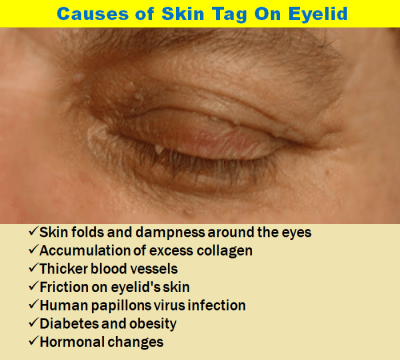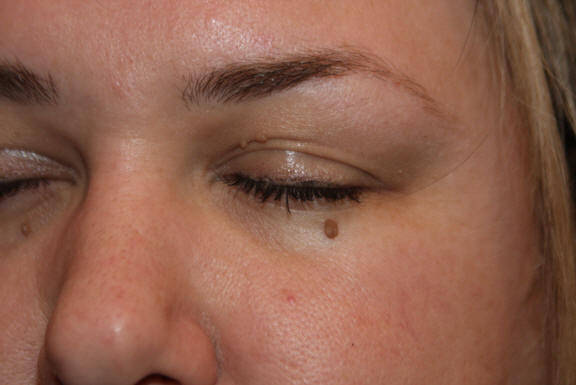


Over time, the skin tag may even disappear, if you can tolerate a strong garlic smell in your bedroom each night. This method won’t help you smell nice, but applying crushed garlic to a skin tag and securing it with a bandage overnight may make the skin tag shrink. It may take a couple weeks for the acid in the vinegar to break down the skin tag tissue. Do this daily until the skin tag falls off. Place a bandage over the cotton ball to keep it in place for 15-30 minutes. Soak a cotton ball in apple cider vinegar and place it on top of the skin tag. Repeat nightly until the skin tag dries out and falls off. Apply tea tree oil to a skin tag and cover with a bandage. Tea tree oil has antifungal and antiviral properties and is safe for your skin. It could take a few weeks to see results, but if you want to avoid a medical procedure, it may not hurt to try one of these homeopathic methods. These take time to dry out or break down the skin tag tissue - mostly collagen fibers gone astray - so the skin tag can fall off. If instant removal of an annoying skin tag is what you’re after, then at-home solutions probably aren’t for you.

Here are some of your best options for removing those pesky skin tags, including at-home remedies and minor surgical procedures. Serrano easily removes skin tags in his office so you can get back to your daily routine with little or no downtime. Johnny Serrano, an experienced surgeon at his Glendale, Arizona, practice, Precision Surgery and Advanced Vein Therapy, offers simple solutions. If you have a skin tag that bothers you, Dr. Pregnancy and other hormonal changes may also contribute to the growth of skin tags. Another study links the human papillomavirus (HPV) to skin tag development. The cause of skin tags isn’t quite clear however, one study links skin tags to obesity and type 2 diabetes. Although they’re not usually cause for alarm, they may bother you for cosmetic reasons or because of discomfort, especially if they easily rub on clothing or jewelry. After treatment, you might develop a new seborrheic dermatosis elsewhere on your body.Skin tags are harmless, benign growths that seem to pop up in the most inconvenient areas of your body, such as your neck, armpits, and eyelids. Some methods can cause permanent or temporary skin discoloration and scarring. Talk with your doctors about the risks and benefits of each method. This method can be used alone or with scraping, especially when removing thicker growths. First your doctor will numb the area and then destroy the growth with electrocautery.

First your doctor will numb the area and then use a scalpel blade to remove the growth. Scraping (curettage) or shaving the skin's surface.This method carries the risk of permanent loss of pigment, especially on Black or brown skin. It doesn't always work on raised, thicker growths. Freezing a growth with liquid nitrogen (cryotherapy) can be an effective way to remove a seborrheic keratosis. Seborrheic keratosis removal can be achieved with one or a combination of the following methods: You might choose to have it removed if it becomes irritated or bleeds, or if you don't like how it looks or feels. A seborrheic keratosis typically doesn't go away on its own, but treatment isn't needed.


 0 kommentar(er)
0 kommentar(er)
